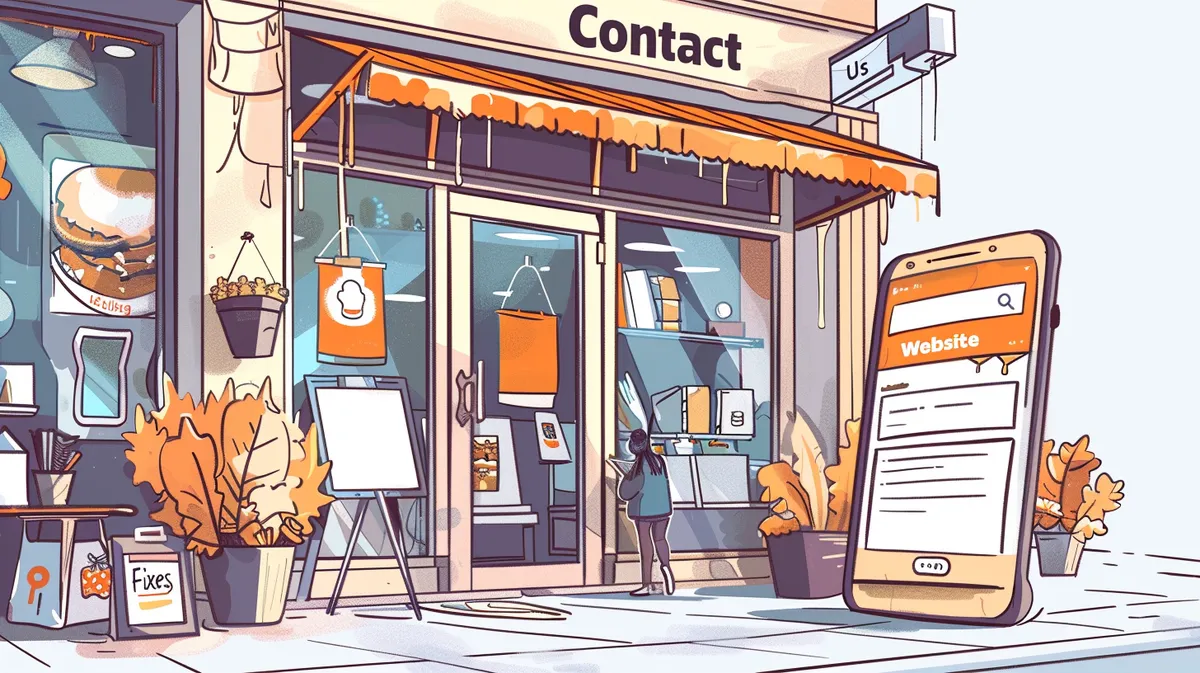Let’s be real for a second…
Most small business owners I work with on Cape Cod don’t sit around thinking about their websites. They’re busy running their businesses—answering phones, scheduling jobs, juggling staff, and trying to have something that resembles a life.
So it makes sense that your website might have slipped into “set it and forget it” mode. But here’s the problem: while you’re focusing on everything else, your website might be quietly driving people away.
The good news? You probably don’t need a full redesign. A few small fixes can make a big difference. Here are five common website problems small business owners face and how to fix them.
1. Outdated Website Content? Why Fresh Info Builds Trust
You wouldn’t leave a faded “Grand Opening” banner up for five years, right? But that’s essentially what happens when your website hasn’t been updated in ages.
Common signs your site might be gathering dust:
- Your homepage mentions services you no longer offer
- Your last blog post was in 2019
- Broken links or images that no longer load
- A footer that still says “Copyright 2020”
This kind of stuff might seem small, but to a potential customer, it can scream “Are they even still in business?”
✅ Quick Fix:
Set a calendar reminder to review your website every few months. Even 15–30 minutes of cleanup—updating services, replacing outdated images, checking links—can go a long way toward building trust.
2. Website Navigation Confusing Visitors? Fix These 2 Issues
Most people decide whether they’ll stick around your site in just a few seconds. If they can’t find what they’re looking for, they’re gone—and probably off to a competitor.
Two common navigation fails I see all the time:
- Overcomplicated menus: You don’t need twelve dropdowns and five sub-menus. Keep it simple. Too many choices lead to decision fatigue.
- “Creative” labels: Cute menu titles like “Our World” instead of “About Us” might feel fun, but they confuse new visitors.
The goal of your navigation is clarity, not creativity.
✅ Quick Fix:
Stick to the classics: Home, About, Services, Contact. If you offer more than one service, consider a dropdown—but only if each item is truly necessary.
Bonus tip: Try asking a friend or customer to find something on your site. If they get lost, so will your visitors.
3. Is Your Website Mobile-Friendly? Here’s Why It Matters
More than 60% of website traffic comes from mobile devices. If your site only works well on a laptop, you’re leaving money on the table.
Warning signs your site isn’t mobile-ready:
- Text is tiny or hard to read without zooming
- Buttons are too small to tap easily
- Images don’t resize correctly on phones
- Key content is cut off or hidden
Not only is this frustrating for users, but Google also considers mobile-friendliness when ranking sites. So it’s a customer experience and SEO issue.
✅ Quick Fix:
Check your site on your own phone. Tap through every page. Ask yourself:
- Can I read the content easily?
- Can I click buttons or links without pinching and zooming?
- Would I be willing to use this site if I were in a hurry?
If it feels clunky, it’s time for a mobile tune-up.
4. Slow Website Speed? How to Make It Load Faster
A slow site is like a slow cashier—people get frustrated and walk away.
Common causes of sluggish load times:
- Images that are way too large (think multi-megabyte files)
- Too many WordPress plugins bogging things down
- Cheap or overcrowded hosting
Speed isn’t just about convenience—it affects SEO rankings and bounce rates. If your site takes more than 3 seconds to load, you’re likely losing visitors.
✅ Quick Fix:
- Use a free tool like PageSpeed Insights to check your site’s performance.
- Compress large images (tools like TinyPNG are great for this).
- Deactivate and delete unused plugins on WordPress.
- If your hosting is super slow, consider upgrading—it might cost a little more, but it can make a big difference.
5. Missing a Clear Call to Action on Your Website? Fix It Fast
Here’s a common mistake: a small business site that lists services, shows some photos, and then… nothing.
No “Call Now,” no “Request a Quote,” no form to fill out—just a dead end. Even if people are impressed by what they see, they don’t know what to do next.
Remember: Your website isn’t just a digital brochure. It’s a tool to get people to take action.
Quick Fix:
Make sure every page has a clear and specific call to action:
- Want them to call you? Add a big, easy-to-click phone number.
- Booking appointments? Add a “Schedule Now” button.
- Offering estimates? Add a short contact form with a “Request a Quote” headline.
Repeat your CTA in more than one place—especially near the top and bottom of your most-visited pages.
A Little Website First Aid Can Go a Long Way
You don’t need to overhaul your whole site to get better results. Fixing a few common problems—stale content, poor mobile experience, slow load time, clunky menus, or unclear CTAs—can have a huge impact on how customers see you online.
And if you’re not sure where to start, that’s where I come in. I specialize in giving small, budget-friendly updates to websites that just need a little help—not a full rebuild.
Need a quick website checkup? Get in touch with me here and I’ll help you figure out what’s working—and what’s not.


